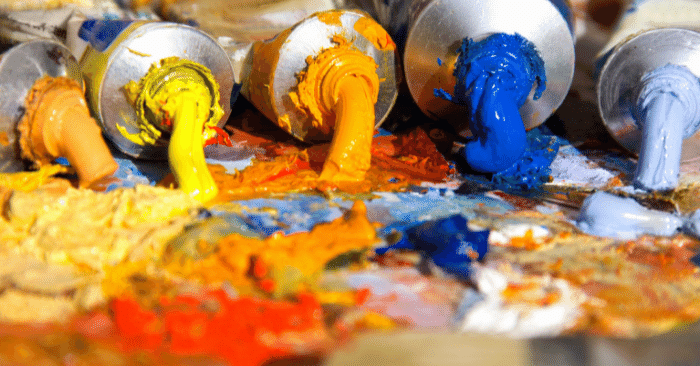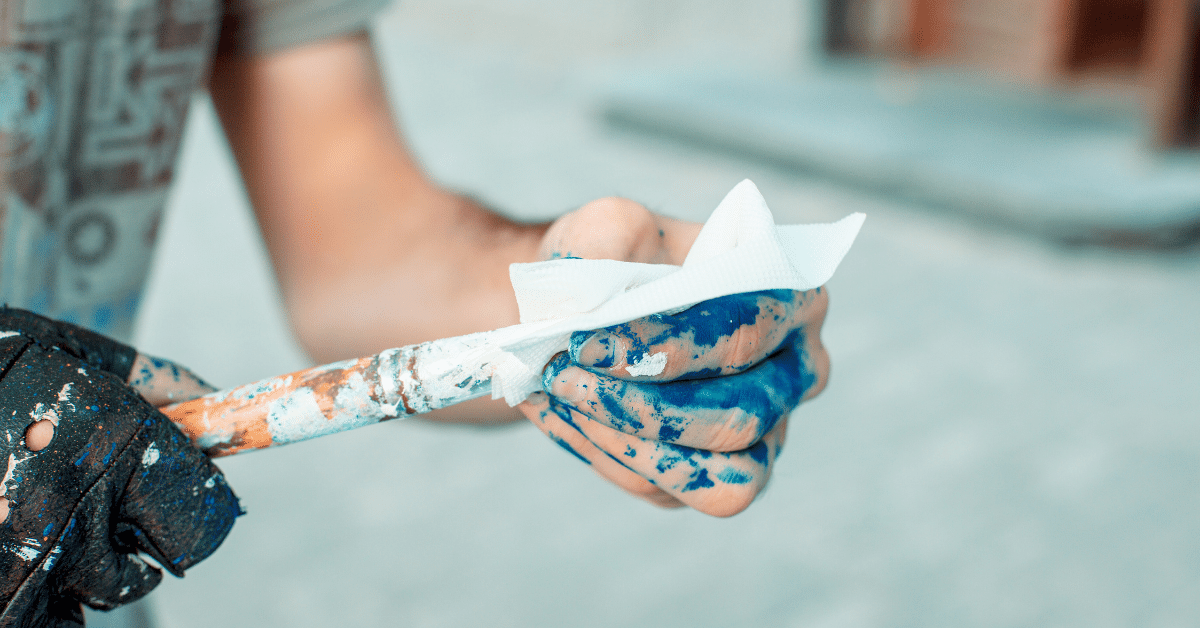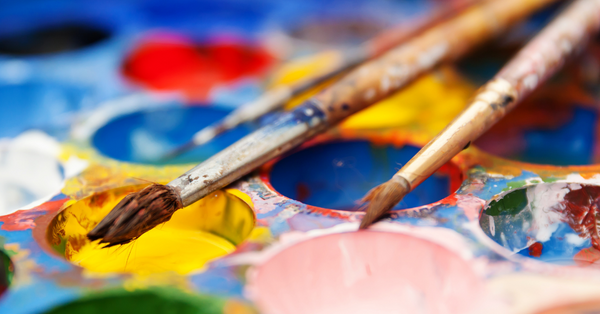
Gouache and acrylic paints are two of the most popular types of paint used by professional and amateur artists alike. And it’s no surprise why—these mediums are easy to use and produce incredible paintings.
While they share some similarities, they also differ in a variety of ways. As a result, it’s important to understand the differences between the two types of paint before attempting to mix the two.
So, can you mix gouache and acrylic paint? The answer is yes! But, like with anything else, there are a few things you should keep in mind. We’ll cover everything you need to know about mixing gouache and acrylic paint to create a final piece you’ll love.
TABLE OF CONTENTS
Comparing the Two Mediums: Gouache v Acrylic Paint
Before we get into the actual mixing of the two paints, let’s start by going over the similarities and differences between acrylic and gouache paints.

Gouache and acrylic paints are both water-based and are popular among artists, but that’s pretty much where the similarities end. There are many differences between them.
1. Gouache has a matte finish, which means the surface appears flat and chalky. Acrylic paint has a glossy finish and can make a surface appear shiny.
2. Gouache is also a more opaque medium than acrylic paint. This means that gouache paints can create brighter and more vivid colors. On the other hand, acrylic paints are more transparent and can create softer and more subtle colors.
3. Additionally, gouache is more difficult to blend than acrylic paint. Gouache dries quickly and doesn’t allow much time for blending, whereas acrylic paint is easier to blend because it takes longer to dry.
4. Plus, gouache isn’t nearly as durable as acrylic, making it more likely to crack or fade over time.
5. Finally, even though gouache and acrylic paints are both water-based, gouache is made with gum arabic and is therefore more soluble in water. Acrylic paint is made with plastic polymers which makes it less soluble in water.
6. And of course, cost is always an important consideration. Gouache paint is generally more expensive than acrylic paint, as it is a more specialized paint. Acrylic paint is more cost-effective and widely available, making it a more popular choice for many artists.
Advantages of Mixing Acrylic and Gouache Paints
So, why would you even want to mix the two paints? And is it possible to just paint one on top of the other?
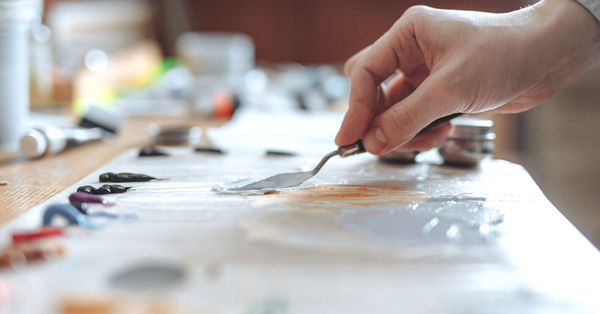
Mixing gouache and acrylic paint can be a great way to expand your artistic horizons. When mixed together, these paints create a unique look that can be used to achieve a wide range of textures and colors.
Additionally, the combination of the two paints can help create a more vibrant and intense color than either one alone. The combination of the two paints also makes it easier to achieve a wide range of effects and colors, allowing for greater artistic freedom.
Mixing the two paints will also impact how you work. It can extend working time as it takes a little longer to dry. Plus, the combination allows for even better coverage than if you just used one type of paint by itself.
That being said, you can easily mix acrylic and gouache paints with great final results. You can also even paint one layer on top of the other for another unique color and texture effect.
How to Mix Acrylic and Gouache Paints
Now that we know a little more about the two mediums, let’s look at how you would even go about mixing the two for best results.
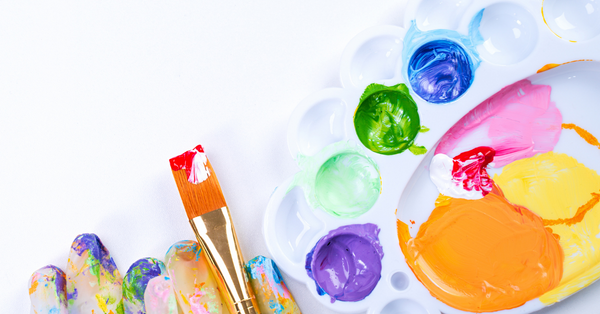
It’s important to note that the paints should not be mixed directly on the surface you’re painting.
Instead, you should mix the two paints on a separate palette before applying the mixed paint to your artwork. This will help to ensure that the two paints will blend together properly and the colors won’t be muddied.
Oddly enough, there is no single “correct” ratio for mixing acrylic and gouache paints. The ratio you choose will depend on the desired effect and the characteristics of the paints.
Generally, the ratio of acrylic to gouache should be between 1:1 and 2:1, with the acrylic paint comprising the majority.
When mixing gouache and acrylic together, it’s essential to use a medium to help the two paints adhere to each other. This medium can be either a medium specifically designed for mixing acrylic and gouache, or you can also use water.
When using water as a medium, it’s important to start with a small amount and gradually add more as needed. Too much water can cause the paints to become too thin and lose their vibrancy.
In addition to using a medium, it’s important to remember that both gouache and acrylic paints dry fairly quickly. As a result, you’ll need to work quickly when mixing the two paints together.
It’s best to mix the paints in small batches so that the paints don’t dry out before you can apply them to your artwork.
Other Paints to Try Mixing with Gouache
Acrylic isn’t the only paint you can mix with gouache. The world is your oyster.
Well, almost.
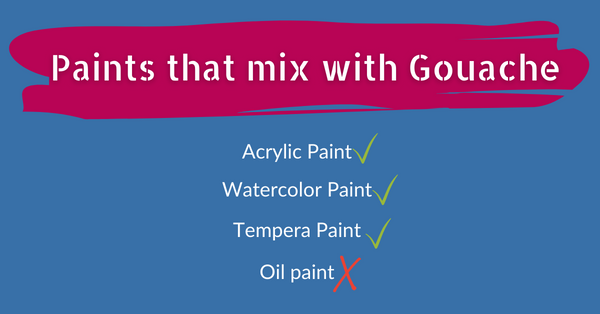
You can mix gouache paint with other water-based paints, such as watercolor and tempera.
Like with acrylic, this allows you to create a variety of effects, such as blending the paints together to create a unique color or using one paint to add texture to another.
Gouache shouldn’t really be mixed with oil-based paints. The two mediums are not compatible and won’t adhere to one another.
Key Takeaway
Overall, you can mix gouache and acrylic paint together to create unique effects on your artwork. Just remember to mix the paints using water or a specific medium, and use a ratio of between 1:1 and 2:1 when mixing acrylic paint with gouache paint for best results.
With just a little practice, you’ll be able to use both paints to create beautiful works of art, unlike anything else you’ve created before.
Frequently Asked Questions
Can you mix gouache with acrylic mediums?
Yes, you can! The two paints are water-based and will easily mix together to create new colors and textures.
Can you use acrylic over gouache?
Yes, you can use acrylic over gouache, but it should be done carefully. Acrylic can be applied over dried gouache, but it is best to use a thin layer of acrylic and to lightly spray the gouache layer with a fixative before applying the acrylic.
What should you not do with gouache?
You should not mix gouache with oil-based paints as the two are not compatible. Gouache should not be used on surfaces that are not suitable for water-based paints, such as plastic or leather. Additionally, gouache should not be left out in the sun for long periods of time as it can become brittle and dry out.

